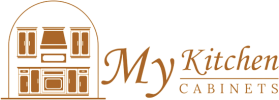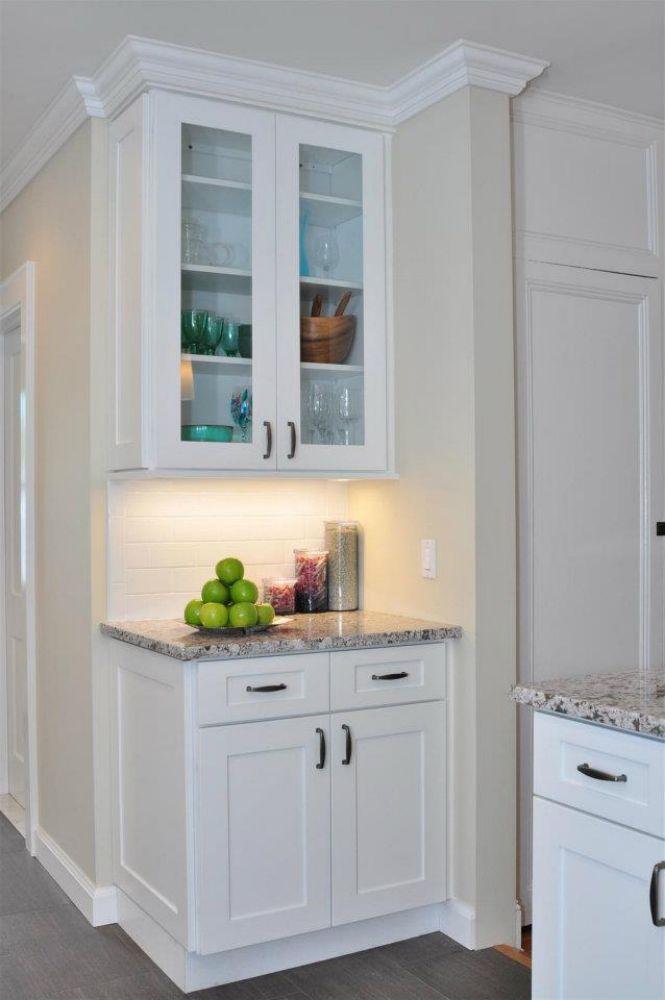The Value of Cabinets in a Kitchen Remodel
Kitchen remodels are among the most significant investments a homeowner can make. Cabinets often account for the largest portion of the budget, sometimes reaching 30–50% of the total renovation cost. With so much at stake, deciding whether to invest in solid wood kitchen cabinets requires careful consideration. While engineered wood and laminate cabinets are more affordable upfront, solid wood offers durability, timeless style, and long-term value. Understanding the pros, cons, and cost-benefit analysis is the key to making an informed choice. Kitchen cabinets are more than just storage—they are a long-term investment in both function and aesthetics.
What Are Solid Wood Kitchen Cabinets?
Solid wood kitchen cabinets are made primarily from natural hardwoods such as maple, oak, cherry, hickory, and birch. Unlike particleboard or medium-density fiberboard (MDF), which are manufactured using wood fibers and adhesives, solid wood is cut directly from trees and crafted into cabinet doors, frames, and panels. Some cabinets may still include plywood for structural support, but the defining characteristic is the use of genuine, natural wood.
Advantages of Solid Wood Kitchen Cabinets
Solid wood cabinets offer a range of benefits that justify their higher cost compared to engineered alternatives:
-
Durability: Hardwoods can withstand decades of use.
-
Timeless Aesthetic: Natural wood grain provides warmth and elegance.
-
Customizable: Can be stained, painted, or refinished multiple times.
-
Resale Value: Increases the overall value of the home.
-
Eco-Friendly: Sustainable wood sources reduce environmental impact.
These qualities make solid wood a popular choice for homeowners seeking long-term performance.
The Durability Factor of Solid Wood Cabinets
One of the most compelling reasons to invest in solid wood kitchen cabinets is durability. Woods like oak and maple resist scratches, dents, and wear better than particleboard or laminate alternatives. When properly maintained, solid wood cabinets can last 20–30 years or more, making them a one-time investment rather than a product that requires frequent replacement.
Aesthetic Appeal of Solid Wood Cabinets
The beauty of natural wood grain cannot be fully replicated by laminate or engineered finishes. Each cabinet is unique, with variations in texture, knots, and grain patterns. Solid wood can be stained to highlight its natural beauty or painted to match evolving kitchen trends. This adaptability ensures your kitchen retains its charm for decades.
Repair and Refinishing Benefits
Unlike laminate or MDF, which often cannot be repaired once damaged, solid wood kitchen cabinets can be sanded, refinished, or repainted. This allows homeowners to refresh the look of their kitchen without replacing the cabinetry. A simple refinish can extend the lifespan of cabinets by another decade, saving money in the long run.
Comparing Solid Wood to Other Materials
When evaluating if solid wood cabinets are worth the investment, it’s helpful to compare them to other materials:
-
Particleboard: Inexpensive but weak, prone to swelling and damage when exposed to moisture.
-
MDF: More stable than particleboard, smoother for painted finishes, but still less durable than hardwood.
-
Laminate: Budget-friendly and resistant to scratches but lacks natural wood appeal.
-
Plywood with veneer: Durable and moisture-resistant but may not offer the same longevity as solid wood.
Solid wood consistently outperforms these alternatives in terms of lifespan, repairability, and resale value.
Cost of Solid Wood Kitchen Cabinets
Price is often the main concern when considering solid wood cabinets. On average:
-
Stock engineered cabinets: $70 – $200 per linear foot.
-
Semi-custom cabinets (mixed materials): $200 – $500 per linear foot.
-
Solid wood cabinets: $400 – $1,200 per linear foot.
While solid wood requires a higher initial investment, its longevity and long-term value often offset the upfront cost.
Return on Investment for Solid Wood Cabinets
Homeowners often ask whether solid wood kitchen cabinets increase home value. The answer is yes. Kitchens with solid wood cabinets are more attractive to buyers and can raise resale value significantly. Real estate experts suggest that homeowners can recoup 60–80% of their kitchen remodel investment, with cabinets being a major contributor to that return.
Moisture and Environmental Resistance
One drawback of solid wood is its sensitivity to environmental changes. Wood naturally expands and contracts with fluctuations in humidity and temperature. However, modern finishes and sealants reduce the risk of warping. Compared to particleboard, which can swell permanently from water exposure, solid wood remains more resistant and repairable.
Maintenance Requirements of Solid Wood Cabinets
Solid wood requires routine maintenance to maintain its beauty and durability:
-
Wipe spills promptly to prevent staining.
-
Clean with mild soap and water; avoid harsh chemicals.
-
Polish with wood-safe products to maintain luster.
-
Use a humidifier in dry winters to prevent cracking.
With proper care, solid wood cabinets will remain beautiful for decades.
Sustainability and Eco-Friendliness
Many homeowners prefer solid wood because of its eco-friendly appeal. Reputable manufacturers source hardwoods responsibly, often using sustainable forestry practices. Additionally, solid wood’s long lifespan means fewer replacements and less waste compared to cheaper alternatives that wear out quickly.
Style Options with Solid Wood Cabinets
Solid wood kitchen cabinets come in a wide variety of styles to suit every design preference:
-
Shaker: Clean lines, versatile for modern or traditional kitchens.
-
Raised Panel: Classic and formal, ideal for traditional kitchens.
-
Flat Panel/Slab: Minimalist, perfect for modern or contemporary spaces.
-
Glass-Front Doors: Decorative, allowing display of dishware.
These versatile designs ensure solid wood remains relevant across changing design trends.
Long-Term Value vs. Short-Term Savings
The debate between solid wood and alternatives often comes down to short-term savings versus long-term value. Engineered materials may save money initially but often require replacement within 10–15 years. Solid wood, by contrast, can last a lifetime with proper care. For homeowners planning to stay in their homes long-term, solid wood is almost always the better investment.
The Role of Kitchen Layout in Cabinet Choice
Your kitchen layout can influence whether solid wood cabinets are worth the investment. For smaller kitchens, fewer cabinets may make solid wood more affordable. In larger kitchens, the higher number of cabinets may increase costs significantly, but the resale value and long-term durability still make it a wise investment.
Comparing Custom, Semi-Custom, and Stock Options
Solid wood cabinets are available in stock, semi-custom, and custom options:
-
Stock: Affordable but limited in style and sizing.
-
Semi-Custom: Greater flexibility in finishes and sizing.
-
Custom: Fully tailored but most expensive.
Forevermark and similar semi-custom cabinet brands often use a combination of solid wood and plywood, offering a balance of durability and affordability.
Homeowner Experiences with Solid Wood Cabinets
Customer feedback consistently highlights satisfaction with solid wood cabinets. Many homeowners appreciate their durability, timeless style, and ability to be refinished. Even after decades of use, solid wood cabinets can often be restored to like-new condition with refinishing, a benefit that engineered cabinets cannot offer.
When Solid Wood May Not Be the Best Choice
While solid wood has many advantages, it may not be the best choice in every situation:
-
Budget constraints: Homeowners on tight budgets may prefer engineered alternatives.
-
Rental properties: For landlords, low-cost cabinets may make more sense if durability is less critical.
-
High-humidity environments: Unless sealed properly, solid wood can warp in extremely humid climates.
In these cases, engineered options may be more practical.
Balancing Aesthetics, Durability, and Cost
The decision ultimately comes down to balancing the three key factors: aesthetics, durability, and cost. Solid wood excels in both appearance and durability but comes at a higher upfront price. For homeowners seeking long-term value and timeless style, the investment is justified.
Conclusion: Are Solid Wood Kitchen Cabinets Worth It?
Yes, solid wood kitchen cabinets are worth the investment for homeowners who prioritize durability, timeless style, and long-term value. While they come with a higher upfront cost, their ability to withstand decades of use, be refinished multiple times, and increase home value makes them a smart choice. Compared to engineered alternatives, solid wood consistently offers superior strength, beauty, and sustainability. For those planning to stay in their homes or seeking a higher resale value, solid wood cabinets represent one of the best investments in kitchen remodeling.
FAQs
1. How long do solid wood kitchen cabinets last?
Solid wood kitchen cabinets can last 20–30 years or more with proper care, far outlasting particleboard or MDF cabinets.
2. Can solid wood cabinets be refinished?
Yes, one of the biggest advantages of solid wood cabinets is their ability to be sanded, repainted, or re-stained, extending their lifespan.
3. Are solid wood kitchen cabinets more expensive than engineered ones?
Yes, solid wood costs more upfront, averaging $400–$1,200 per linear foot, but they offer long-term value through durability and resale appeal.
4. Do solid wood cabinets warp in humid environments?
Wood can expand or contract with humidity, but modern finishes and proper maintenance reduce the risk of warping significantly.
5. Are solid wood cabinets eco-friendly?
Yes, when sourced responsibly, solid wood cabinets are eco-friendly. Their long lifespan also reduces waste compared to cheaper alternatives that wear out quickly.
Read: Which finishes on kitchen cabinets are easiest to maintain over time?
Read: What kitchen cabinets are best for maximizing small apartment kitchens?

